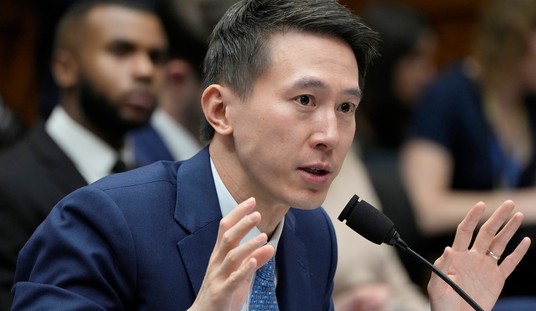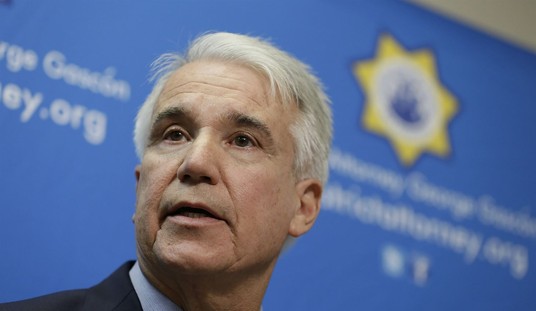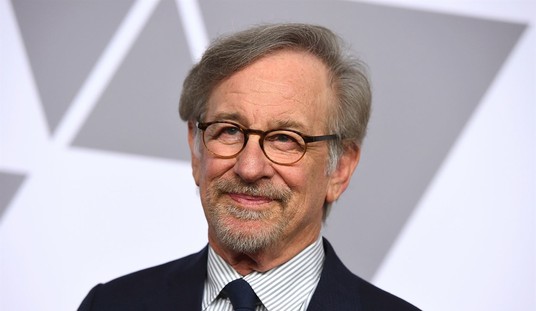He doesn’t mean a traditional open primary, where voters can vote in either party’s primary regardless of their own party registration. He doesn’t mean an open primary a la Mississippi either, where Democrats who hadn’t voted in their own party’s primary were eligible to vote in the runoff between Cochran and McDaniel. He means fully open: One primary that includes the candidates from both primaries, with all voters voting. The top two finishers move on to the general election, even if they both happen to belong to the same party. I.e. the Mississippi primary would have included Cochran, McDaniel, and Democrat Travis Childers; assuming Cochran and McDaniel had finished in the top two, as is likely in a state as red as that one, the November ballot would have been a de facto runoff between them with no Democrats on the ballot.
You trust Chuck Schumer to do what’s best for America, don’t you?
But primaries poison the health of that system and warp its natural balance, because the vast majority of Americans don’t typically vote in primaries. Instead, it is the “third of the third” most to the right or most to the left who come out to vote — the 10 percent at each of the two extremes of the political spectrum. Making things worse, in most states, laws prohibit independents — who are not registered with either party and who make up a growing proportion of the electorate — from voting in primaries at all…
We need a national movement to adopt the “top-two” primary (also known as an open primary), in which all voters, regardless of party registration, can vote and the top two vote-getters, regardless of party, then enter a runoff. This would prevent a hard-right or hard-left candidate from gaining office with the support of just a sliver of the voters of the vastly diminished primary electorate; to finish in the top two, candidates from either party would have to reach out to the broad middle…
While there are no guarantees, it seems likely that a top-two primary system would encourage more participation in primaries and undo tendencies toward default extremism. It would remove the incentive that pushes our politicians to kowtow to the factions of their party that are most driven by fear and anger. For those of us who are in despair over partisanship and polarization in Congress, reform of the primary system is a start.
This is a solution to a problem posed by ideologues in both parties, he solemnly insists, at a moment when the right has knocked off a couple of senators and the House majority leader and the left is picking its nose, writing folk songs about a presidential non-candidate whom no one seriously believes would threaten Hillary Clinton. But never mind that. Would his plan actually work? If you stick Democrats and Republicans in the same electoral pool in the primaries, would the moderates somehow magically float to the top? According to Harry Enten at FiveThirtyEight, the available evidence from California (which adopted top-two primaries in 2010) suggests … it wouldn’t:
Moreover, it doesn’t look like there has been a trend toward moderation in California. The state’s legislature has been quite as polarized as anywhere else. Political scientists Douglas Ahler, Jack Citrin and Gabriel Lenz of the University of California, Berkeley, studied the 2012 top-two primary results and found that moderate candidates didn’t do any better than they would have in a closed, intra-party primary vote. These results held for the U.S. House and state Senate races.
Ahler, Citrin and Lenz found that voters didn’t differentiate between extreme and moderate candidates. Voters may be willing to cast votes for moderate candidates, but they didn’t know who those candidates were. Instead, they relied on a candidate’s party identification. And because most voters (including independents) lean toward one party or another, their votes are reliably partisan.
Another study found that, if anything, California lawmakers having taken more extreme positions since 2012. None of which is surprising, really. For starters, why would a top-two primary necessarily increase turnout? If I believed, as Schumer claims to, that moderates are more likely to win in primaries like that, I’d be *less* likely to vote because I’d assume that the general election would essentially just be a re-run of the primary. Why bother to vote in the latter when I’ll face the same basic choice in the former? Also, what exactly is the strategic argument for voting for a moderate in a top-two primary? If you’re worried about “electability,” that worry will affect your choice of candidate regardless of whether the primary is open or closed. Frankly, if I were voting in a top-two primary in a state where I knew the tea party had a presence, I might be more inclined to support a conservative in the primary than a moderate for fear of a strategic nightmare unfolding if I didn’t. What I mean is, if I knew that the tea-party candidate was likely to get 30 percent of the overall primary vote thanks to solid conservative support, I might be inclined to throw in with them even if I preferred a RINO purely for the sake of ensuring that a Republican ended up in the final two and was on the ballot in November. In a closed primary, which ensures that the GOP will be represented in November, I wouldn’t have that fear. I could vote for the RINO and, if he lost, feel secure knowing that I could still vote for a Republican in the general election anyway.
I don’t see how this helps Democrats much either. Assume a traditional election posture nowadays where there’s a Democrat with solid party support, an establishment Republican with shaky party support, and a tea partier with decent but passionate support. Schumer, I guess, wants some Democrats to abandon their own party’s nominee and vote for the establishment Republican instead, thus ensuring that the choice in November is between a liberal and a centrist. But there’s a gamble involved there: If the Democrat starts off with 40 percent, the establishment Republican starts off with 32 percent, and the tea partier starts off with 28 percent, a 15 percent shift from the Democrat to the establishment Republican results in a top-two of … the establishment Republican and the tea partier, a mighty poor outcome for Dems who are trying to exploit the primary system. And people would realize that, which would mean few Democratic crossovers and a de facto closed primary between the establishment Republican and the tea partier. Which is basically what we have now. I don’t get it.








Join the conversation as a VIP Member